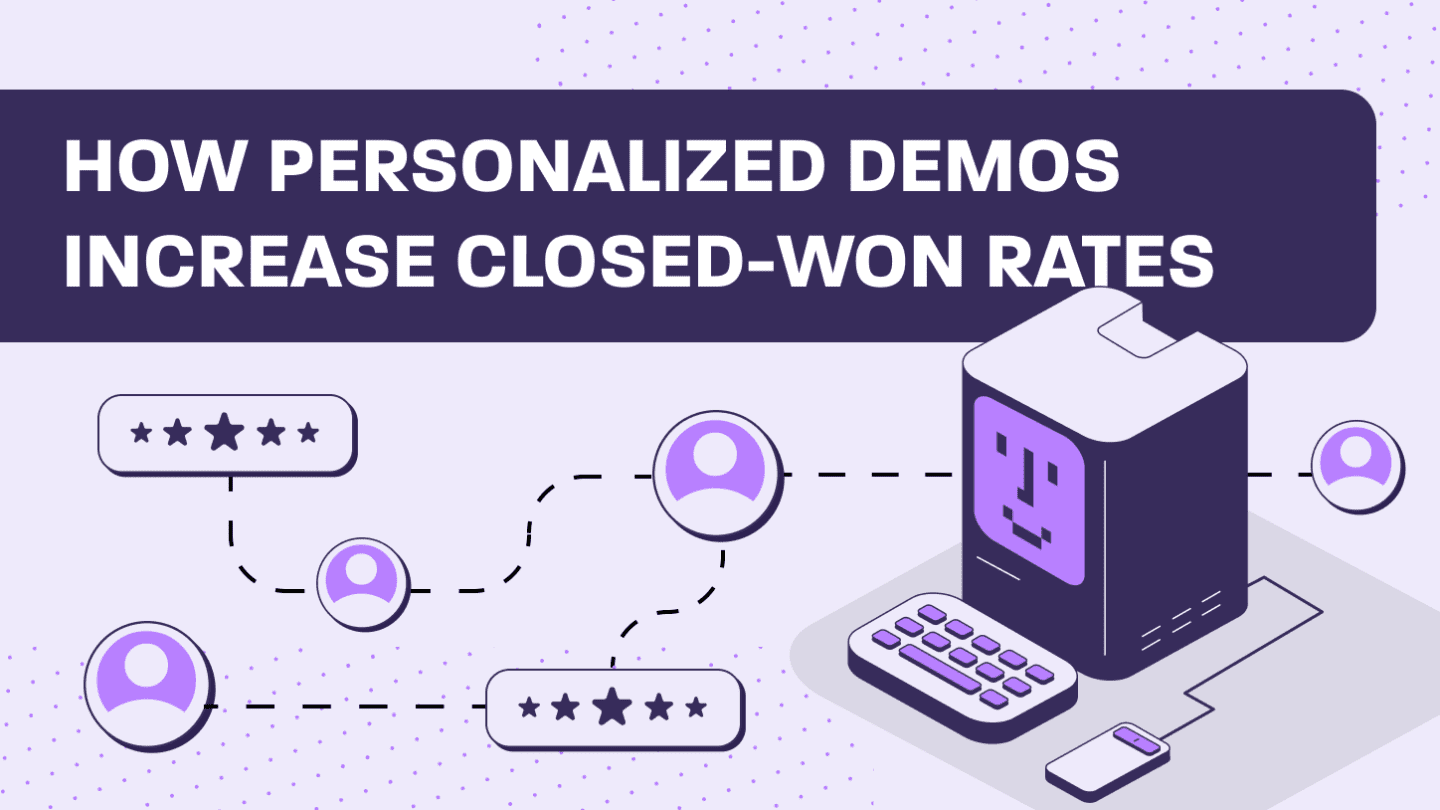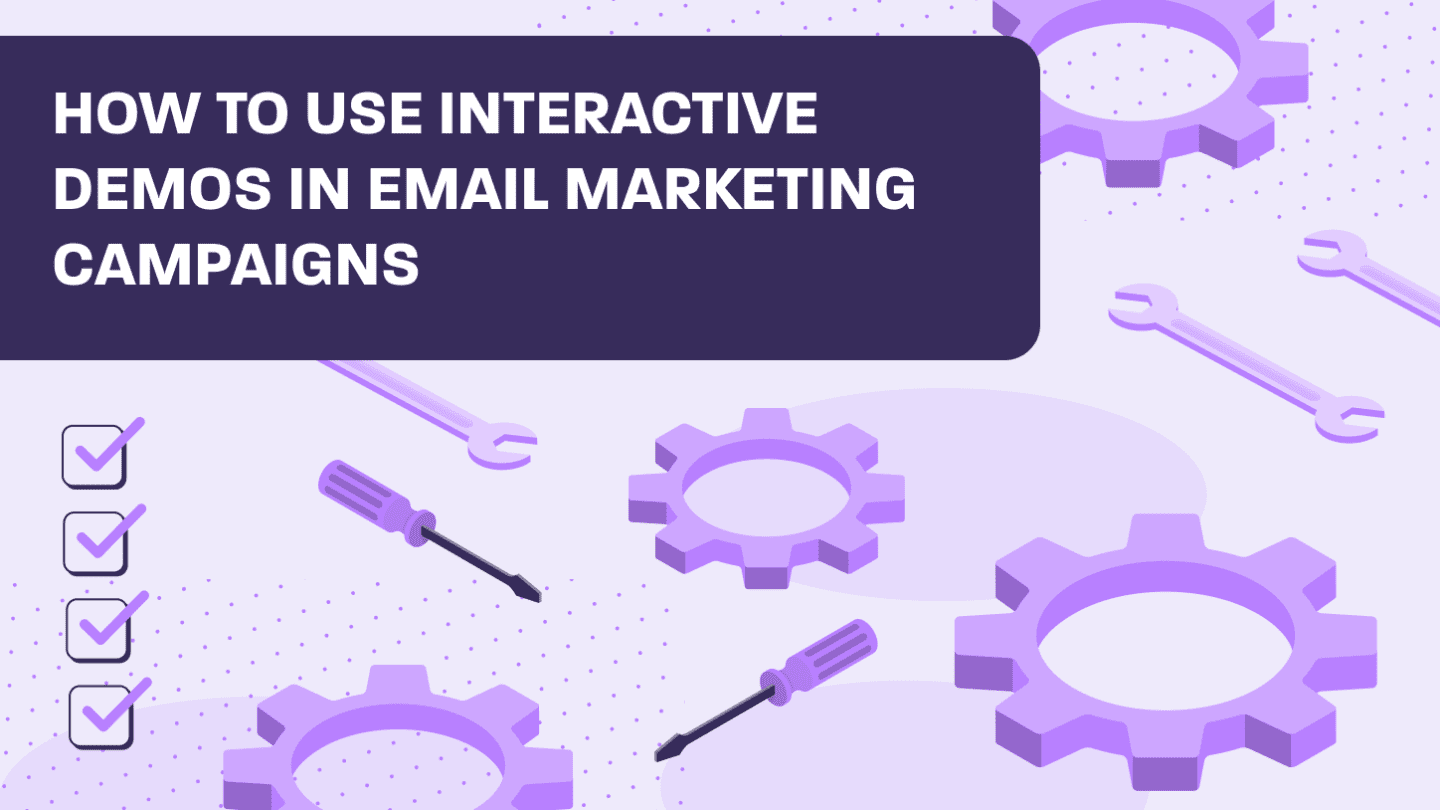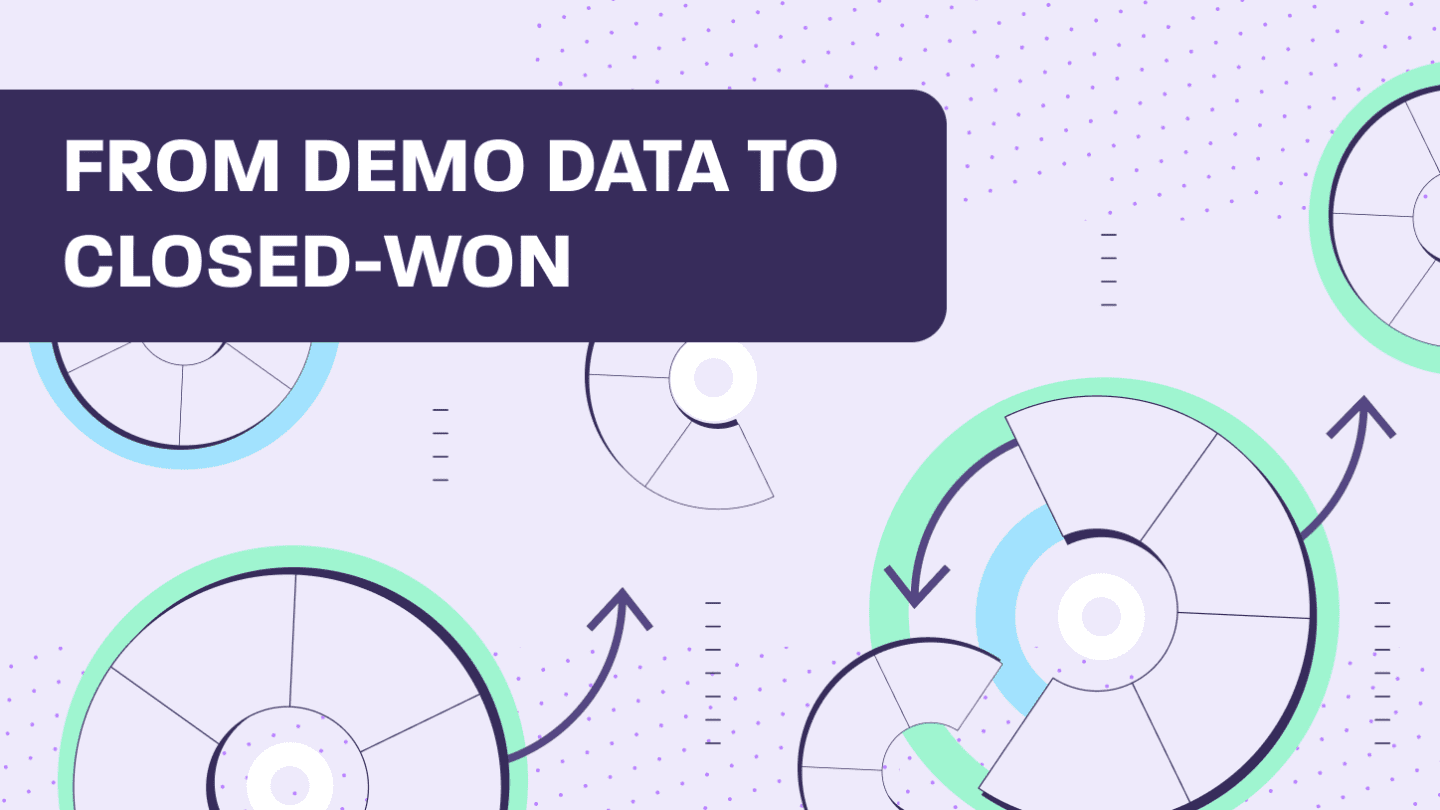Updated on August 6, 2024.
It’s day 1 of Sales 101, and the first lesson is all about learning the ABCs: Always Be Closing.
Anyone that has worked in sales has probably heard the ABCs thrown around more times than MQL, PQL, ARR, SDR, KPI, and all the other sales abbreviations combined. (Wow, that’s a mouth full!)
This approach to selling puts closing the sale above all else, with every interaction geared towards getting a prospect to sign on the dotted line.
But what if we said you might be missing something if you follow this, and only this, mantra?
*Record scratch*
We know this might sound like a controversial thing to say. So let us explain.
Rather than focusing on developing a more personalized relationship with the prospect, this approach can make potential customers feel like objects instead of, well, people.
So, what’s a sales rep to do? Still continue to close deals, of course. But also, adopt another mantra: ABH (Always Be Helping). And one way to always be helping is to develop a personalized inbound sales strategy.
In this article, we’ll break down everything you need to know about personalizing your inbound sales strategy.
What is inbound sales?
Inbound sales is a sales methodology that relies on leads coming to you and requesting to learn more or buy your product.
Instead of the sales team reaching out to potential prospects as they do in outbound sales, inbound sales happen when prospects react to marketing materials, referrals, or brand awareness and seek out your solution.
Once they’re in your system though, it’s up to sales to make sure they understand their needs and close the deal.
What’s the difference between inbound sales and outbound sales?
The key difference between inbound and outbound sales is the approach an organization takes to attract the leads it wants.
In inbound sales, the goal is to convert the leads that have made their way into your b2b sales funnel. Prospects approached you because they heard about your business and want to understand how your product can solve their specific problems. Now your sales team needs to use what they know about the customer to seal the deal.
Meanwhile, outbound sales is about reaching out to the audience in a targeted way, often by cold calling or emailing people who have never heard about you. Essentially, this approach involves sales reps going out and winning the leads they want.
Both are valid approaches and have a unique role to play in your overall sales strategy. For example, outbound sales approaches (that use the right techniques, of course), may come in handy when you believe a prospect will not only receive you well but is looking for exactly what you offer.
B2B inbound sales vs. B2C inbound sales
It might not seem like it, but there’s a crucial difference between B2C and B2B inbound sales. B2C inbound sales approaches focus on an individual’s pain points, while B2B inbound is about addressing the pain points of an entire team.
Just like you would assume, finding out what a single person’s needs are is much easier than a whole team’s.
And when it comes to closing B2C sales, you just need one signature on that dotted line. B2B sales, on the other hand, involves convincing a group of people to sign off on a deal. So, if you’re targeting a business, you’ll need to know the issues the organization is experiencing as well as which potential customers will require the most persuasion.
Sometimes, by looking at previous customers in the same industry, you might be able to guess which kinds of problems they are facing. Other times, prospects might interact with information that offers clues about the difficulties they are having. By tracking these key insights about your inbound leads you can work to gain an understanding of who they are and what they want.
The relationship between inbound marketing and inbound sales
While inbound marketing generates leads, inbound sales turns those leads into closed deals.
Inbound marketers need to have a good understanding of customer needs and pain points so they can determine the right content to produce, whether it be blogs, social media posts, or interactive product tours. Data can come in handy with this to give marketing teams deeper insights to focus their efforts and target the right audience.
Because in today’s day and age, customers have more access to information and influence over their purchases than ever before.
So, as customers’ demands change, sales strategies need to change right alongside them. To close deals, you’ll need to have in-depth knowledge of your customers’ needs and how your product will meet them.
This idea of learning the customers’ requirements, issues, goals, and preferences is at the heart of good inbound sales.
Why personalizing your inbound sales is important
There are plenty of reasons a B2B SaaS company would use a personalized inbound sales strategy. Here are a few of them:
Customer acquisition costs
Unless you’re operating on an unlimited budget, you’ll want to look for ways to trim customer acquisition costs. By streamlining your sales process and better aligning it with your marketing plan, you can raise the closed-won proportion of your business and use leads more efficiently.
Customer satisfaction and brand perception
Remember to ABH (always be helping). The goal of inbound sales is to assist prospects in selecting the best solution by taking on the role of an advisor instead of a salesperson.
Customer lifetime value
The old saying goes: happy customers, happy life… right? Satisfied customers are more inclined to upgrade and renew their service, which, in turn, boosts customer lifetime value. To gauge how happy your customers are, you can send customer satisfaction score (CSAT) surveys.
Accelerated referrals
When prospects have a positive experience working with your sales team, they are more likely to recommend you to their peers who may need your product.
In SaaS, an effective inbound sales strategy is all about understanding customers’ needs and showing how you can address them.
The four stages of inbound sales methodology
Now that we covered the basics, let’s go over the inbound sales methodology, which is typically broken down into four stages.
1. Identify
First thing’s first, you need to identify potential leads.
The simplest way to do this is by setting up processes that gather prospect information and pass it to the sales team whenever a prospect visits your website, completes a form, reads your emails, downloads your gated content, or otherwise engages with your marketing content.
2. Connect
This is the time to look into who these leads are and whether they are potential buyers.
There are a few questions you should be asking about your prospects, including identifying the role the buyer plays in their business. What do they find interesting? What associations do they hold? Which of your websites have they visited? Have they downloaded anything you are offering? How does their lead score compare to that of your other leads?
With the answers to these questions, you’ll be better able to connect with prospects on a personal level.
At this point, you’ll also begin to qualify leads.
3. Explore
Once you know your prospects like the back of your hand and have discovered a few leads, it’s time to develop a connection.
Rather than sending the same standard intro message that sounds like it was written by a robot, kick off your communication with a customer in a personalized way. You can discuss the buyer’s industry, passions, affiliations, and similar interests while guiding their objectives and interests.
This way you start the conversation off by building authority and trust.
This stage is all about utilizing a buyer’s early curiosity to gain more trust and understand what the customer actually needs to address their pain points.
Using your understanding of the customer, you can develop tutorials for the rest of your sales team to guide them through early discussions with prospects. But to help the prospect understand the full value your product brings, you should still personalize each conversation based on what you know about their goals and needs.
4. Advise
At this point in the inbound sales process, you’ll need to apply everything you learned about the prospect in the previous stages and advise them on how they can resolve their pain points.
Now’s when you’ll want to whip out those killer software demos, which highlight exactly why the product will change your prospect’s life. But take note: one of the most common mistakes sales reps make during this stage is to follow their demo script to a T, even if that script doesn’t explain why a SaaS product is the best solution for a prospect’s specific needs.
Instead of making a generic presentation, inbound salespeople need to try to show how the product will help customers with their pain points. Ideally, your inbound sales demos should be personalized and entirely focused on the needs of the customer.
Pro tip: When giving a demo, it’s helpful to start by recapping the prospect’s current situation and anything new you have learned from previous talks, such as a struggle they are facing or a goal they want to achieve.
Examples of inbound sales pitches in SaaS
Sure, understanding the inbound sales methodology is one thing, but actually converting leads means you’ll need to craft a pitch with the right messaging for your specific customers.
Here are examples of some (fictional) product pitches and how you might approach the messaging:
1. Highlighting benefits instead of features
In this example, a SaaS review platform quickly gets to the point of the actual value a business can gain from its product.
Looking to gain more social proof? Our user-review platform lets you really hear what the people are saying about you. You can then quickly add customer testimonials to your website or marketing materials to build more trust in your business.
2. Begin with a question
Think about the pitch as being like a date. You definitely wouldn’t be seeing each other again if your date jumped straight into the conversation by blabbing about themself, and didn’t take the time to ask any questions about you. The same can be said about an inbound sales pitch.
Instead of going right into who you are and what your SaaS offering does, you can spark engagement by asking a question. You can start things off with phrases like:
- “Does it often seem like…”
- “Have you ever noticed…”
- “Have you always wanted to…”
In this example, the solution is a platform to manage employee expenses:
“You are probably having more expenses than you anticipate each quarter, right?”
3. Be brief
You know you have a killer product. But the truth is, prospects don’t want to hear about every single feature. If you have already identified their pain points, you can cut to the chase and focus the discussion on the aspects of the product that address the prospect’s specific needs.
In this example, the solution is a photography platform aimed at helping non-photographers access and use technical photo editing tools with ease. In their pitch, they get straight to the point:
“We help you edit photos like a pro!”
4. Stress the data
When you back up your claims with hard numbers from reputable sources, you’re more likely to make an impression on your prospects.
In this example, the company is an SEO platform that helps users research, plan, and execute their SEO strategies.
You could say:
“Search Engine Optimization is a clear priority for today’s sales strategies…”
Or, you could say:
“49% of marketers believe that the best ROI of any marketing channel is achieved via organic search…”
This kind of pitch not only makes the reader pause but also establishes you as a voice of authority and someone who could provide the answers they need.
There are many more ways you can develop the messaging of your inbound sales. You just need to make sure you’re centering the conversation around the customer.
Inbound sales best practices
Think that’s all there is to inbound sales? Think again.
We’ve rounded up some game-changing tactics that many teams overlook. Let’s dive in:
Embrace the tech revolution
Don’t just sell smart. Work smart.
Leverage cutting-edge tools to streamline your process, decode prospect behavior, and engage leads effectively. This frees you up for what really matters: human connection.
Oh, and always log those leads in your CRM. Trust us, future you will thank you.
The art of listening
When you finally land that meeting, remember they reached out for a reason.
They’ve already spotted potential in your offering.
Your job? Ask the right questions. But first, zip it and listen. Their context is gold.
Tailored content is king
Generic won’t cut it.
Customize everything – from pricing sheets to demo videos. You can even connect them with a client who has walked in their shoes. Or invite them to grill your solution engineer in a live Q&A.
Keep it real
Landing the sale is just the beginning.
Build trust from day one. To do this, you need to ditch the fluff and the overselling.
Be their rock
Radio silence is a deal-killer.
Can’t give your prospect what they need right now? Tag in a teammate. Better yet, make the intro yourself.
Remember, in sales, you’re all playing for the same team.
Use interactive demos to boost your inbound sales strategy
By now, you know just how important it is to create high-quality and relevant content for your inbound sales.
After you’ve used these techniques to lay the groundwork, your SaaS inbound strategic planning will be primed and ready to go, and you can begin to convert those leads that have found their way to you. That said, it’s vital to keep the momentum going strong when it comes to volume and quality. This is where interactive product demos come into play.
Embedding product tours for lead generation
With a product demo platform like Walnut, you can embed interactive product walkthroughs on your websites to provide users with a hands-on, engaging experience with the product. Why? More and more, lead generation is being led by the product.
Interactive demos offer a fresh way to engage and persuade hesitant prospects to try out your solution.
By enabling quick and seamless access to your SaaS product, you can not only boost lead conversion and lead quality, but also speed up the onboarding process.
When you let the product do the talking, you can leverage the demo as part of your product-led growth strategy to let the SaaS product sell itself.
Using customized product demos to educate prospects
Interactive product demos are an excellent way to lend a more engaging support to your sales presentation to improve its quality. To truly understand the value of your product, prospects who learn better through hands-on experience need to see it in practice. This is especially true when distinctive features serve as major selling factors.
Prospects typically find it more enticing to interact with the product than to listen to you talk about it, so why not give them the opportunity to do just that?
With a demo platform like Walnut, you can use personalized and interactive demos to demonstrate how your product fulfills prospects’ unique needs and alleviates their pain.
And showing off what your product can do helps your sales team get one step closer to turning leads into customers.
You still don’t use Walnut?! Book a meeting with us now by clicking that “Get Started” button on the top of the screen.





